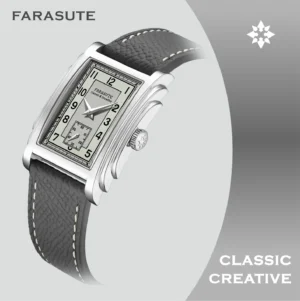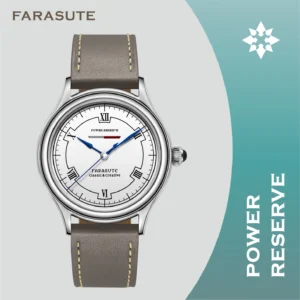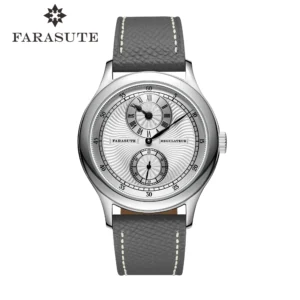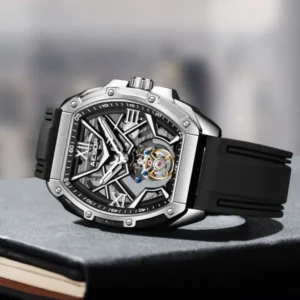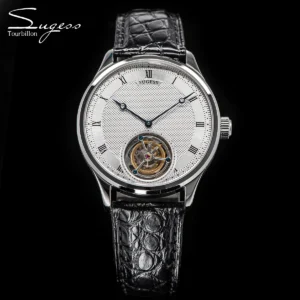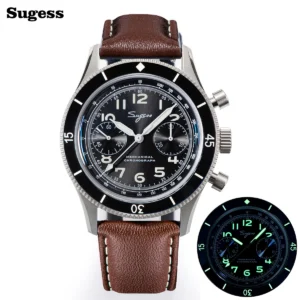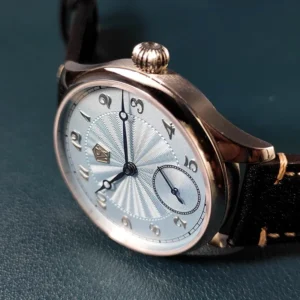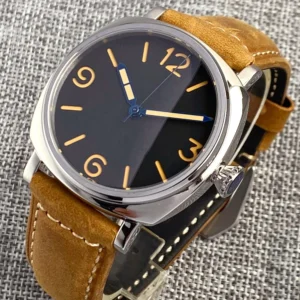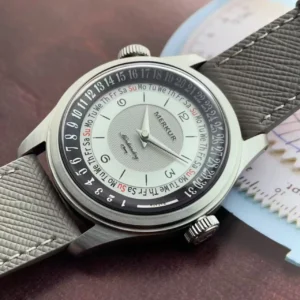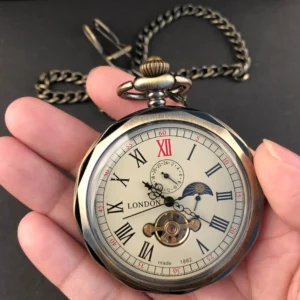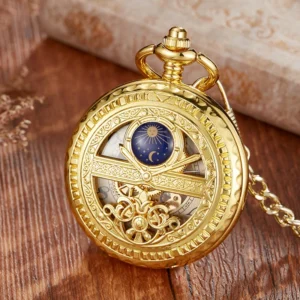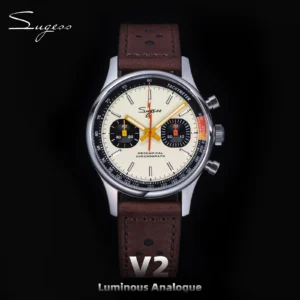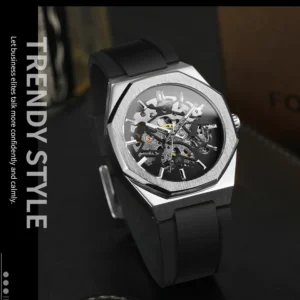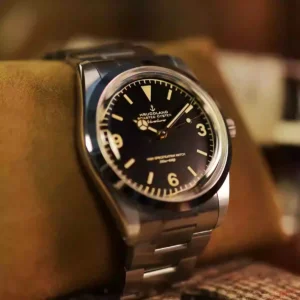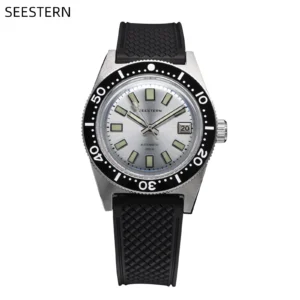Classic Manual Wind Watches
Enjoy winding your classic manual watch each day. These timepieces offer slim, elegant designs for any occasion. Rediscover the pure craft of traditional watchmaking.
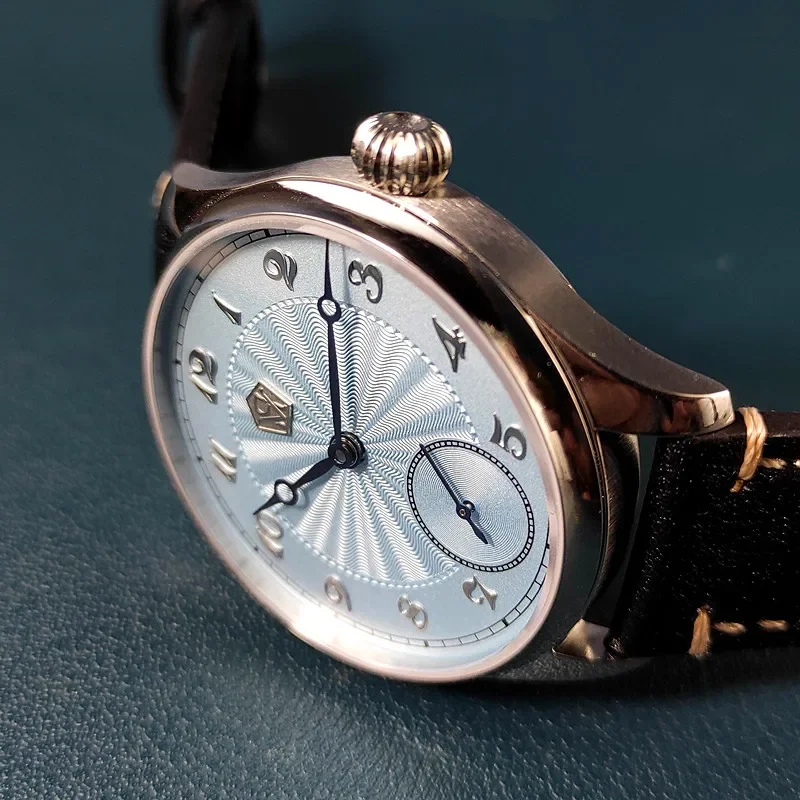
Showing 1–12 of 16 results
Classic Manual Wind Watches, Manual Wind Dress Watches, Square & Rectangular Automatic Watches
$884.95 Select options This product has multiple variants. The options may be chosen on the product pageClassic Manual Wind Watches, Manual Wind Dress Watches
$1,222.13 Select options This product has multiple variants. The options may be chosen on the product pageClassic Manual Wind Watches, Manual Wind Dress Watches
$761.16 Select options This product has multiple variants. The options may be chosen on the product pageClassic Manual Wind Watches, Mechanical Skeleton Watches
$1,349.73 Select options This product has multiple variants. The options may be chosen on the product pageAutomatic Skeleton Watches, Classic Manual Wind Watches, Manual Wind Dress Watches, Mechanical Skeleton Watches
$1,944.80 Select options This product has multiple variants. The options may be chosen on the product pageChronograph Pilot Watches, Classic Manual Wind Watches, Classic Pilot Watches
Price range: $1,690.75 through $1,756.03 Select options This product has multiple variants. The options may be chosen on the product pageClassic Manual Wind Watches, Manual Wind Dress Watches
Price range: $473.93 through $482.32 Select options This product has multiple variants. The options may be chosen on the product pageClassic Manual Wind Watches, Military Inspired Automatic Watches, Square & Rectangular Automatic Watches
Price range: $312.65 through $405.15 Select options This product has multiple variants. The options may be chosen on the product pageClassic Manual Wind Watches, Manual Wind Dress Watches
Price range: $477.30 through $493.00 Select options This product has multiple variants. The options may be chosen on the product pageClassic Manual Wind Watches, Moonphase Automatic Watches
Price range: $92.04 through $92.36 Select options This product has multiple variants. The options may be chosen on the product pageChronograph Pilot Watches, Classic Manual Wind Watches
Price range: $1,331.41 through $1,345.79 Select options This product has multiple variants. The options may be chosen on the product page
Showing 1–12 of 16 results
The Artistry of Hand-Wound Timepieces
In the world of fine horology, manual wind watches represent the purest expression of traditional watchmaking. These timepieces, also called hand-wound watches, require the wearer to manually turn the crown each day, transferring energy to the mainspring that powers the movement. This fundamental connection between owner and timepiece creates a unique ritual that enthusiasts cherish—a daily moment of interaction that automatic watches simply cannot provide.
What distinguishes manual wind watches is their mechanical purity and often slimmer profiles. Without the need for a self-winding rotor, watchmakers can craft thinner movements that allow for more elegant case designs. The simplified mechanics showcase the artisan’s skill, with each component visible through display casebacks that reveal the intricate dance of wheels, springs, and jewels.
At Sharp Aspect, these timepieces perfectly embody our “Time. Precision. Heritage.” philosophy—celebrating horological tradition in its most authentic form.
The Mechanical Heart: Understanding Manual Wind Movements
The beauty of a manual wind movement lies in its elegant simplicity. When you turn the crown, you directly wind the mainspring, storing energy that gradually releases to power the watch. Unlike automatic watches that contain rotors that swing with wrist movement to wind the mainspring, manual calibers rely entirely on human interaction.
This mechanical purity offers several advantages. Manual movements are typically thinner, allowing for more svelte case designs. The absence of a rotor means the entire movement can be viewed unobstructed—a canvas for traditional decoration techniques like côtes de Genève, perlage, and hand-beveled edges that watchmakers have perfected over centuries.
Power reserve—how long the watch runs between windings—typically ranges from 40-70 hours depending on the caliber, with some exceptional movements offering even longer running times. This technical aspect becomes part of the ownership experience, as enthusiasts learn to sense when their timepiece needs rewinding.
Timeless Appeal: Why Enthusiasts Choose Manual Wind Watches
The allure of manual wind timepieces extends far beyond their technical specifications. These watches connect wearers to horological tradition dating back to the very first portable timekeepers. Each time you wind the crown, you participate in a ritual essentially unchanged for centuries.
This daily engagement creates a unique relationship with your watch. Many collectors describe the winding process as meditative—a moment to pause, connect with craftsmanship, and appreciate the mechanical marvel on their wrist. The tactile feedback as the mainspring tightens provides a sensory experience absent from automatic or quartz timepieces.
The aesthetic advantages are equally compelling. Manual wind dress watches often feature remarkably thin cases that slide elegantly under a shirt cuff. This slender profile allows for versatile wear and timeless elegance that transcends fashion trends.
For serious collectors, manual winds often represent greater value in vintage markets and hold special appeal for their mechanical purity—celebrating watchmaking at its most fundamental and honest.
Finding Your Perfect Manual Wind Timepiece
Selecting the ideal hand-wound watch begins with understanding movement quality. Look for calibers known for reliability, smooth winding action, and thoughtful finishing—even in areas not immediately visible. The winding mechanism should feel substantial without excessive resistance.
Manual wind watches span various style categories. Dress watches tend to feature clean dials, precious metals, and minimal complications beyond time-telling. Field watches offer robustness with legible dials and durable cases. Chronographs showcase complex mechanical engineering with satisfying pusher action that connects you directly to the timing mechanism.
Case dimensions typically range from 36mm to 40mm in diameter, though vintage-inspired pieces may run smaller while contemporary interpretations might be slightly larger. The absence of an automatic rotor often allows for thinner cases between 7-11mm in height.
Materials range from classic stainless steel to precious metals like gold or platinum, with each offering different weight, aesthetics, and wrist presence. Dial designs tend toward classic simplicity to honor the traditional nature of manual winding—think applied indices, faceted hands, and restrained typography.
Strap choices greatly influence character, with leather reinforcing the heritage appeal, metal bracelets adding versatility, and fabric options bringing casual wearability to these traditional timepieces.
The Winding Ritual: Caring for Your Manual Timepiece
Proper maintenance begins with establishing a consistent winding routine. Most collectors prefer morning winding, ensuring maximum power for the day ahead. Generally, 20-30 crown turns will fully wind most watches, though you’ll learn to feel when the resistance increases, indicating a full mainspring.
Be attentive to this resistance—overwinding can damage the movement. The crown should never be forced once you feel significant tension. When setting the time, always move hands in their natural clockwise direction, and avoid changing date complications between 9 PM and 3 AM when fragile mechanism components are engaged.
For watches not in regular rotation, consider watch winders specifically designed for manual timepieces that need periodic winding to keep lubricants properly distributed. Professional service every 3-5 years ensures longevity, maintaining accuracy and preventing wear from compromising these precious mechanisms.
Explore Our Curated Collection
Sharp Aspect’s manual wind watch collection embodies our commitment to horological excellence. Each timepiece in our selection undergoes rigorous evaluation against exacting standards for movement quality, case construction, and finishing. We prioritize watches that showcase traditional craftsmanship while offering reliable daily performance.
Our collection spans several distinct subcategories, each highlighting different aspects of manual wind appeal. From dress watches exemplifying elegant simplicity to field watches built for adventure, and chronographs showcasing mechanical complexity—each piece represents the perfect marriage of form and function.
Dress Elegance
Our dress watch selection features manual wind movements housed in slim cases typically under 9mm thick. These refined timepieces showcase clean dial designs with applied hour markers, graceful dauphine or leaf-shaped hands, and minimal text to maintain harmonious proportions. Whether paired with alligator leather straps or fine mesh bracelets, these watches transition effortlessly from boardroom to formal events.
Mechanical Chronographs
Manual chronographs offer a unique tactile experience unlike any other watch type. The deliberate action of winding the movement, then engaging the timing function through precisely engineered pushers, creates a mechanical symphony under your fingertips. Like our chronograph pilot watches, these timepieces combine technical sophistication with versatile styling suitable for both formal and casual settings.
Frequently Asked Questions
Is manual winding bad for a watch?
No, manual winding is not harmful—it’s exactly how these watches are designed to function. The winding mechanism is engineered specifically for daily use, and proper winding actually ensures optimal performance and longevity of the movement.
What is the power reserve of a manual wind watch?
Most manual wind watches offer power reserves between 40-70 hours, though this varies by caliber. Higher-end movements may provide extended reserves of 80 hours or more, while vintage pieces typically range from 36-48 hours.
Which watch styles commonly feature manual wind movements?
Dress watches most frequently feature manual wind movements due to their slim profile advantages. However, you’ll also find manual winding in field watches, chronographs, and even some contemporary sports watches where the tactile connection with the mechanism is valued.
How do manual wind watches compare to automatic watches in terms of maintenance?
Manual wind watches typically require similar service intervals (3-5 years) to automatic watches. While they lack the self-winding mechanism that can wear over time, they still need regular maintenance to ensure proper lubrication and timing accuracy.
Discover the Craftsmanship Behind the Movement
The appreciation for manual wind watches often marks the beginning of a deeper horological journey. These timepieces invite you to look beyond the dial and understand the centuries of innovation, artistry, and precision engineering that make mechanical timekeeping possible.
For those drawn to the visible architecture of movements, explore our skeleton watches or mechanical skeleton watches that reveal the beating heart of these remarkable creations. Each offers a window into the world of gears, springs, and jewels that work in perfect harmony to mark the passing of time.
Experience the satisfaction of winding your watch each morning—a ritual that connects you to watchmaking heritage and reminds us that in our digital age, mechanical craftsmanship remains something truly special.

